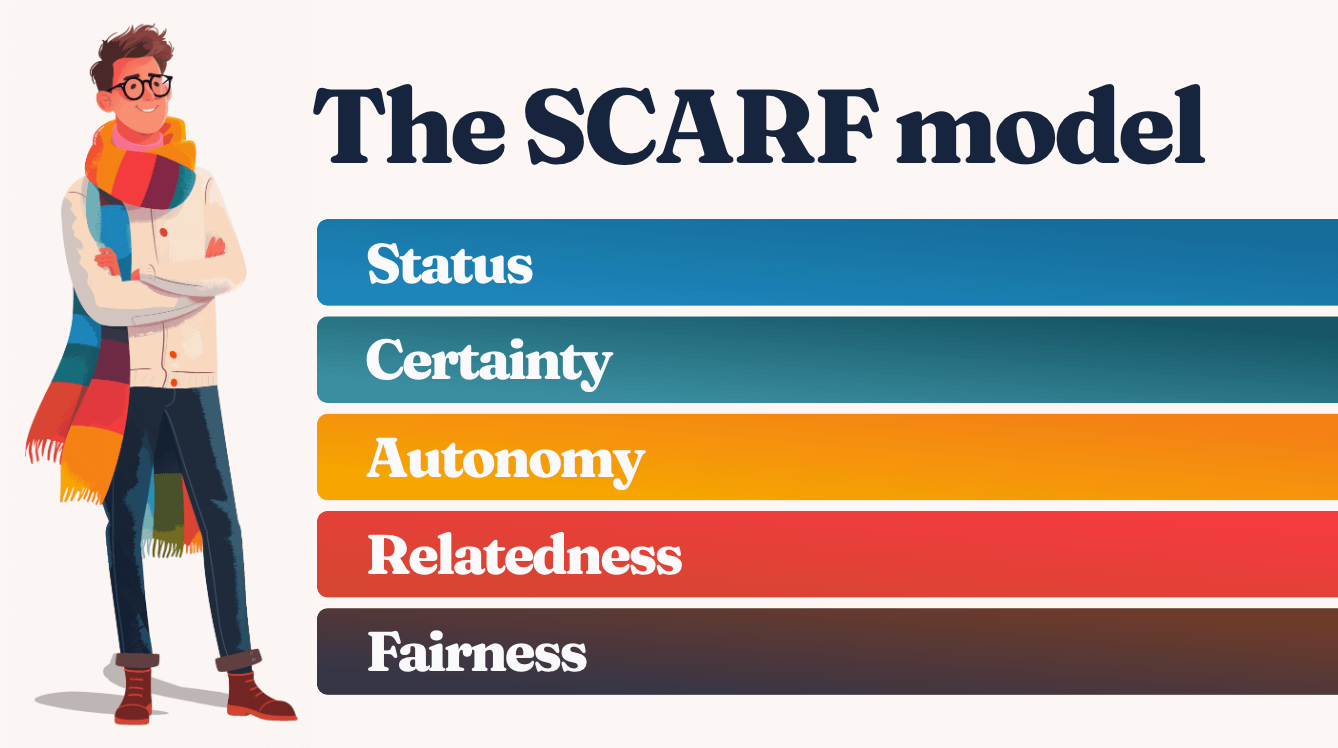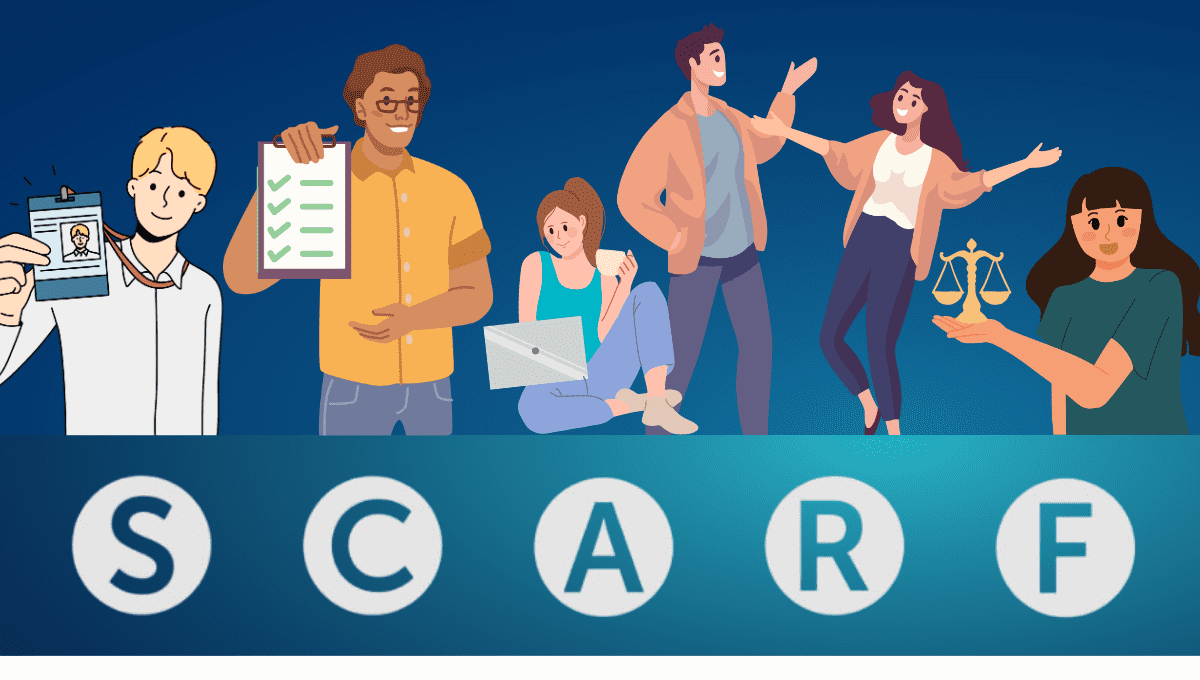Why do we sometimes respond primal in social situations? And what does this mean for leaders motivating teams?
The SCARF model, rooted in neuroscience, explains our intense emotional reactions to some social situations.



The SCARF-model reveals that there are five social needs that can trigger brain responses similar to those for physical survival (the threat and reward system). This explains our intense emotional reactions to some social situations. For example, feeling excluded from a group can activate brain regions associated with physical pain, signaling a threat to our status and relatedness to others.
The five social needs are:
- Status: The desire for recognition, competence, and acceptance within social contexts.
- Certainty: The need for predictability and confidence in future outcomes, fostering a sense of psychological safety.
- Autonomy: The pursuit of freedom and control over one's actions and decisions.
- Relatedness: The longing for social connection, belonging, and meaningful relationships with others.
- Fairness: The expectation of justice, equity, and consistency in treatment and outcomes.
The SCARF-model can help anticipate and manage emotional responses in others, particularly in situations involving feedback, change, and decision-making. Using the SCARF-model helps leaders ease perceived threats and boost the good vibes that come from working together.

